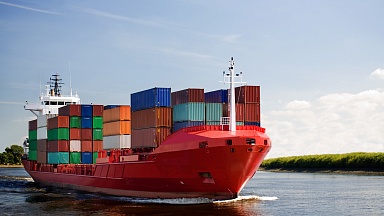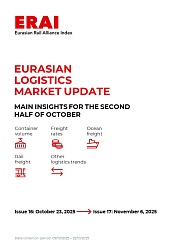And reports to The Loadstar suggest some factories in China are continuing production during the holiday to catch up with the backlog of orders.
Capacity on sailings to the US and Europe remains «extremely tight» through to November, according to a Chinese-based NVOCC contact.
The source also reported shortages of 40ft high-cubed containers at both Shanghai and Ningbo.
And the source added: «There is also a scramble to try rebook containers due to the CMA CGM cyberattack, but that is only possible if you pay the carriers’ premium rates for equipment and space.»
Indeed, the equipment shortage in China, particularly for the popular 40ft boxes, is becoming critical. For example, Hapag-Lloyd today reduced the pick-up time for empty containers from all Chinese port depots to just seven days prior to the ETA of the loading vessel.
Due to the Golden Week holiday, the Shanghai Containerized Freight Index (SCFI) published earlier, on Wednesday, and recorded a 21.79 point jump in its comprehensive index to 1,443.54, double the reading of a year ago.
The European components of the SCFI both recorded increases, with spot rates to North Europe up $89, to $1,168 per teu, while rates for Mediterranean ports increased $18, to $1,211 per teu.
‘Live’ rates for Europe, as recorded today by the Freightos Baltic Index (FBX), were broadly in line with the SCFI, representing a year-on-year gain of just shy of 100% for North Europe and around 60% for the Mediterranean.
The SCFI readings for the US west and east coasts were stable, at $3,863 and $4,622 per 40ft respectively, whereas the FBX was showing a spot of $3,844 for the west coast and $4,716 for the east coast.
Lars Jensen, of SeaIntelligence, said the buoyant spot rates «continue to illustrate the impact of supply chain bottlenecks».
He added: «The Pacific rate levels to the US have stayed around the same level for three weeks — a stabilisation, but at a record high level.
«The Asia-Europe trade has seen rates slowly rise, and this week we see North Europe rates hit a four-year record [SCFI] and the Mediterranean rates a five-year record,» said the analyst.
Ocean carriers are also benefiting from a rate spike on secondary trades, with the SCFI readings for Santos, Durban and Lagos showing year-on-year increases of 124%, 106% and 43%, respectively.
And as reported by The Loadstar on Monday, shippers are facing «significant» hikes in contract rates for 2021. According to Patrik Berglund, CEO of freight rate benchmarking firm Xeneta, there are already substantial increases showing up in its data.
He told The Loadstar: «We already see long-term rates with 30%-plus increases coming in on the transpacific eastbound, and we expect to see more on this corridor the longer the short-term market remains so high. Asia-Europe is also very strong, we’re seeing 30% rate increases for the contract market.»
Noting that shippers report they are in «constant fire-fighting mode», with scarce equipment and «carriers pushing them onto the higher-yielding short-term market», Mr Berglund said the relationship between carriers and their contract customers was «challenged».
He added: «We can see how destructive this industry can be, in terms of long-term focus and partnerships.»




